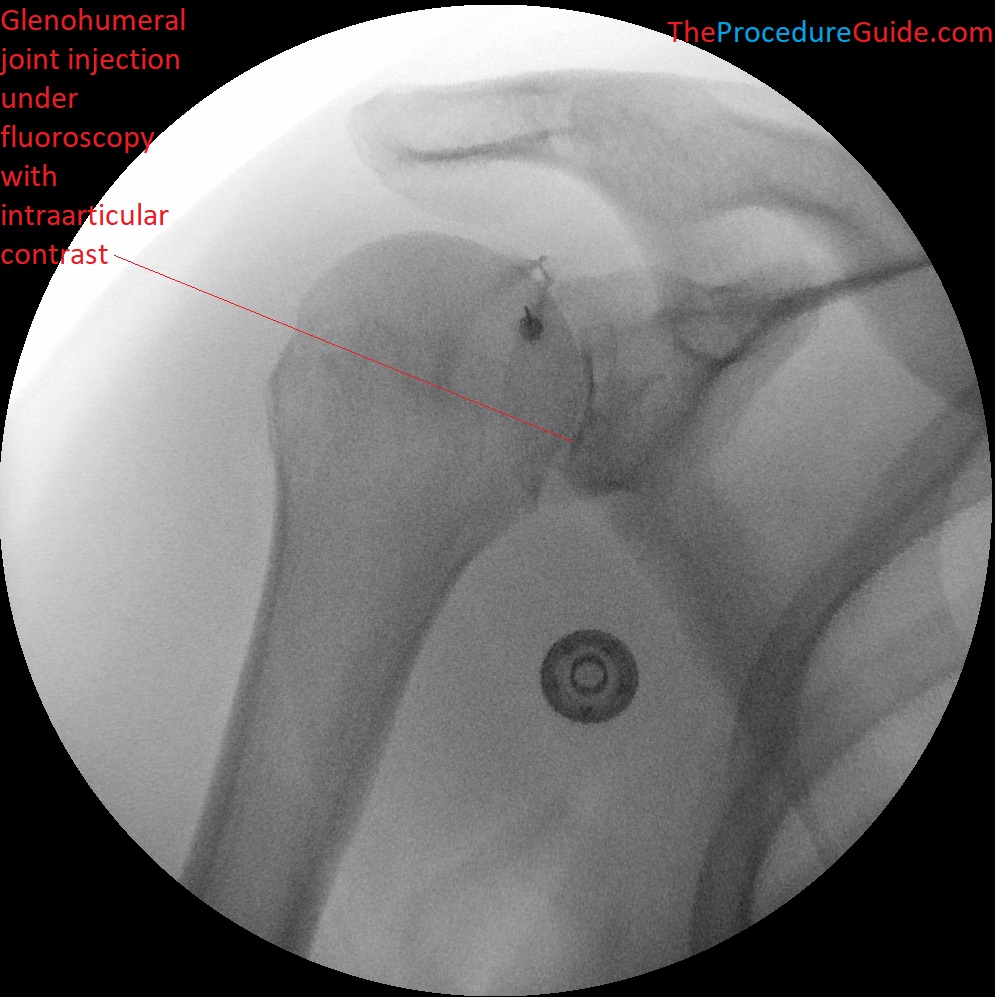Table of Contents
Name of Procedure
- Shoulder glenohumeral joint injection (with or without steroid)
Sample Opnote
Goal
To inject a medication into the glenohumeral joint
Indications
Depending on what’s injected, usually it is to treat pain from arthritis
Contraindications
Anatomy
For the purposes of a glenohumeral injection, anatomy is straightforward. From an anterior perspective the joint is just near the tip of the shoulder. Since this is fluoroscopically guided you’ll use the bone as your landmark under fluoro to get an exact location.

Equipment/Skills
- C-Arm
- Bed for C-Arm
- 25g x 1.5″ hypodermic needle
- 3cc syringe with contrast
- 3cc syringe with desired injectate:
- bupivacaine/lidocaine (ie, 2cc 0.25% bupivacaine)
- steroid (ie, 40mg triamcinolone)
- Prep solution
- Drape to keep the injection site clean
Landmarks and Patient Positioning
- Position the patient in a basic supine position so that the bottom of the c-arm can go under the table below the shoulder.
- Extend and externally rotate the arm as much as possible (palm facing up) to open up the joint as much as possible.
- Be sure that you are not just supinating at the forearm. The upper arm should rotate as well if possible.
Technique
- Position the C-arm in an AP orientation.
- Playing with the angle will allow you to see which angle is best to open up the joint (the sample below is not perfectly aligned but is sufficient for the procedure)
- Use a pointer to find a spot directly over the upper medial quadrant of the humeral head.
- Insert a 25g x 3.5 inch needle in a mostly AP direction aiming straight posterior to land on the humeral head.
- Inject a small amount of contrast to confirm spread in the joint

- From here inject the desired medication based on the specific procedure that you’re doing.
Tips
- Usually a 25g x 1.5″ hypodermic needle is sufficient to enter any space in the shoulder. With this approach no second/larger needle is needed, and usually it can be done without local anesthetic since it’s the same needle that would be used to administer local anesthetic anyway.
- If it turns out that the hypodermic needle is not long enough, just inject lidocaine through the needle while pulling it out.
- Then use a longer needle such as a bent quincke needle to reach the joint space.
References
- Glenohumeral joint injection (technique)
- Technique description and sample images
- Arthrography of the Shoulder: A Simple Fluoroscopically Guided Approach for Targeting the Rotator Cuff Interval
- Review of the rotator cuff interval and sample arthrogram images
